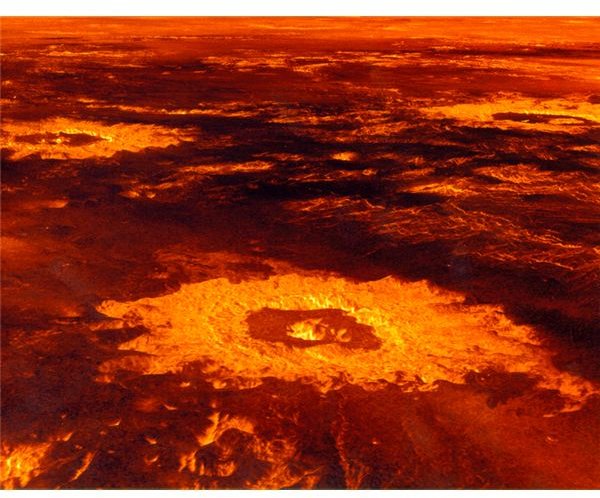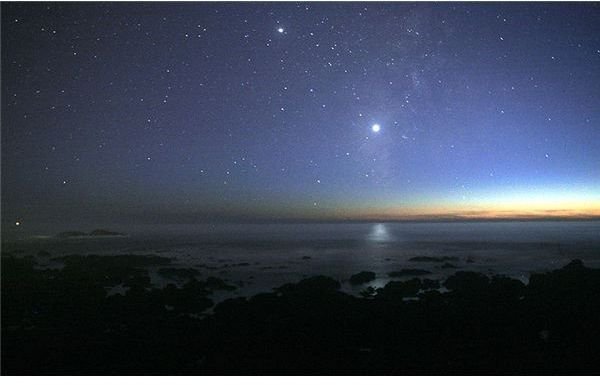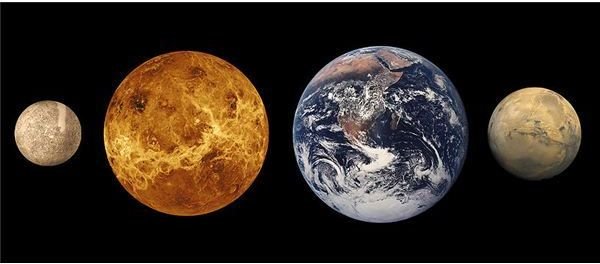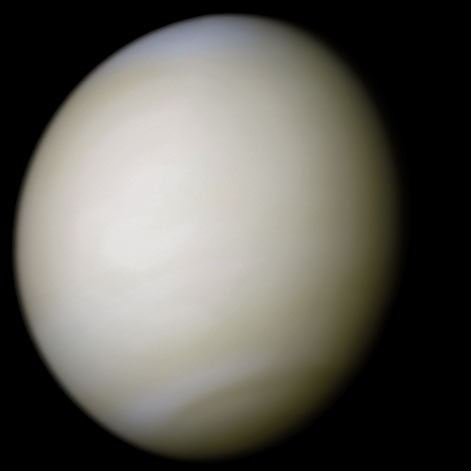What is the Weather and Temperature of Venus? The Planet Explored
Weather of Venus
Though many do not realize it, Venus actually has quite a bit of active weather within its atmosphere.
The reason we did not know about such weather is the fact that huge, thick, massive clouds cover the planet.
These clouds are primarily the result of an increased carbon dioxide atmosphere, which is 97% carbon dioxide.
The other 3% is composed of nitrogen and argon.
Because of this atmosphere, the clouds within Venus are purely sulphuric.
The temperature is also increased by the enhanced greenhouse effect that results from this atmosphere.
The sulphuric clouds move quite quickly across Venus. In fact, they can travel as much as three times faster than a hurricane does.
These clouds periodically let sulphuric rain fall, but it evaporates back into the clouds before making it to the ground.

In addition to swift moving clouds, winds are also rapid. At times, they can reach up to 220 mph, but these speeds are not common at all heights.
While winds and clouds move quite quickly near the top of the atmosphere, there are minimal winds near the actual ground of Venus.
This is due to the pressure of the atmosphere, which is estimated to be 92 times the pressure of Earth’s.
Another interesting fact is that Venus has been proven to have lightening. Although a controversial subject, the Venus Express confirmed that lightening was indeed present on the planet by finding whistler mode waves; the very source of lightening activity.
While lightening does hit the ground, it is estimated to occur half as frequently as on Earth.
Temperature of Venus

While the weather of Venus is a swirling, chaotic scenario; the temperature is intense and drastically hot. In fact, the surface of Venus is so hot, it will melt lead rapidly.
The average temperature of Venus is a whopping 464 degrees Celsius, which is equivalent to 867 degrees Fahrenheit. This temperature barely varies from area to area, or night to day.
While the actual ground of the planet is severely hot, the temperature decreases

rapidly moving upward. For example, the temperature decreases to 27 degrees Celsius when 55 kilometers above the surface.
In fact, the pressure at this height is also the same as Earth’s, making it the ideal area of Venus to employ for exploration.
Earth Similarities

Although Venus looks nothing like Earth, there are quite a few similarities both past and present between the two.
Many scientists believe that Venus could have been nearly identical to Earth at some point in the past, with water covering a large quantity of the planet.
This belief is based on three crucial pieces of evidence. The first is the discovery of two “continent” type formations.
These “continents” are slightly smaller than Earth’s, but are high enough for

scientists to assume that lower areas of the planet were covered in water.
The second piece of evidence is the Volcanic activity that occurs throughout the planet. Though much of the lava is non-existent these days, Volcanoes can usually only be formed with the assistance of water.
The final and perhaps greatest piece of evidence is the discovery of more lower infrared radiation being emitted from highlands than low lands. Scientists believe that the reason for this is possibly a result of granite.
Granite is a type of rock formation that requires water to form. It is found throughout the Earth and its crust. This means that if there is granite on planet Venus, water once formed it.
Another interesting point is the fact that Venus is quite similar in size to Earth, meaning it could handle such bodies of water.
With this information, you don’t have to ask “what is the weather and temperature of Venus?” Instead, you can answer others when they ask such a question and showoff your newfound knowledge.
Image Credits
North American Space Association - NASA
Mila Zinkova Photographer
Ricardo Nunes Image Processing
Sources
